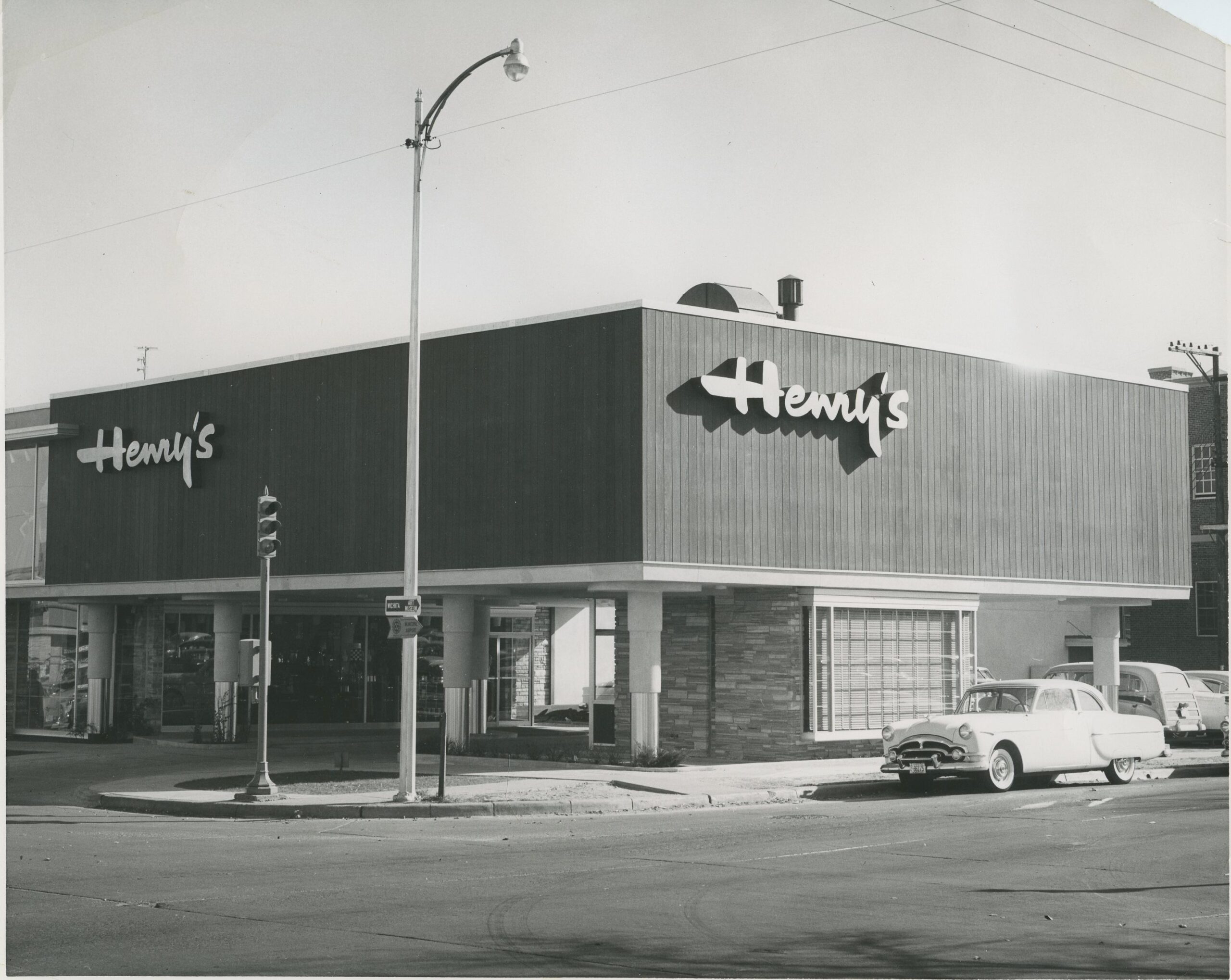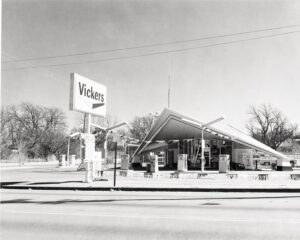Century II is just the most conspicuous example of much distinctive mid-century modern architecture in Wichita, including shopping centers, churches, gas stations, office buildings and more, architect and history buff Dean Bradley says.
The post-World War II building style was influenced by everything from the proliferation of automobiles to new building materials and even the threat of nuclear war. Those buildings that remain are worth saving, both for their intrinsic qualities and for environmental reasons, Bradley believes.
Bradley, owner of Platt, Adams, Bradley and Associates, discussed the era’s public and commercial architecture during a Senior Wednesday program last month at the Wichita-Sedgwick County Historical Museum. Bradley is president of the museum ’s board of directors.
He began his survey with Lincoln Heights Village Shopping Center, located at Douglas and Oliver and considered the city’s first suburban shopping center when it opened in 1949. The Walter Morris Co., which had developed most of the nearby Crown Heights neighborhood, made a point of building a large parking lot in front of the new L-shaped center, where a grocery and Gessler drug store had previously sat curbside. Window display boxes on the center’s north end — now occupied by Watermark Books — canted toward east-bound traffic on Douglas. “You weren’t walking by this so much as you were driving by it,” he said.
A few years later, Henry’s department store opened a location across Oliver with an elevated showroom that motorists could pull under and hand their keys to a valet for free parking. “It was nicknamed the store on stilts,” Bradley said of the space, which is now the Ferguson Phillips home store. Its architect — former Frank Lloyd Wright apprentice John Hickman — later worked on Century II and the Corbin Education Building at Wichita State University, while engineering firm Dudley Williams & Associates gained national attention for its use of waffle slab construction to span the overhead space.
Gas stations also sprung up to handle the nation’s love affair with cars. The Vickers family, who’d made a fortune drilling oil, got into the filling station business in a big way. Its first to feature the distinctive “batwing” design lives on today in Haysville as that city’s Economic Development Office — and popular photo backdrop for car enthusiasts.
Bradley said Jack Vickers worked with Hickman to design the attention-grabbing building. Drivers could “see that shape coming, and it sort of makes a ‘V’ for Vickers.’” The concrete structure was one of the few in that area to survive Haysville’s 1999 tornado.
In the 1950s, the KG&E building at First and Market heralded a building boom downtown, Bradley said. The KG&E building and nearby Colorado Derby building both featured horizontal design lines characteristic of the era, and both have been repurposed into apartments today.
Another downtown apartment building — the Broadway Autopark — started life as the city’s largest parking garage, with valet service. Today, Bradley noted, its residents can drive up the building’s ramp and park in front of their apartments. He called it “a great example of adaptive re-use.”
“Concrete is especially expensive for the environment, to come up with and (to put in) place. We call it ‘embodied carbon.’ It’s something you might be hearing more about. That building was built structurally sound, so why not use it when you can?”
Bradley noted that the former downtown main library, designed in the geometric Brutalist style by Schaefer Schirmer & Eflin Architect, is the only structure in Kansas to win a national American Institute of Architects award. Like Century II, it was once threatened with demolition.
Numerous Wichita houses of worship show modern influences, especially Catholic churches responding to edicts of the Vatican II council of the 1960s. At least three adopted in-the-round designs, including All Saints near Harry and Hillside, Christ the King on West Maple and the Church of the Magadalen formerly located at Kellogg and Woodlawn (“sometimes referred to as the ‘holy hamburger,’” Bradley joked).
Cold War tensions made themselves felt in buildings such as the Blanchat-Fallet chiropractic clinic built at West 13th and St. Paul in 1963. It featured a basement with strengthened walls, fallout shelter and pantry packed floor-to-ceiling with food, fuel, water and medical supplies. It now houses a holistic wellness space.
Further west, the Vegas-stye Cotillion ballroom, built in 1960, used elevated signage in the shape of lollipops to announce itself to passing motorists on Kellogg.
On the city’s near northeast side, architect Charles McAfee used repeating U-shaped concrete structures in designing the public pool that now bears his name. McAfee employed a pattern of vertical steel pillars to good effect at the nearby Jackson Mortuary, Bradley said.
Other mid-century modern structures haven’t survived. Bradley cited the Wesley Motor Hotel on East Central and former AAA headquarters in the same neighborhood, the Schimmel Hotel on East Kellogg and the former Airport Terminal building at what’s now Wichita Eisenhower National Airport.
Bradley noted that the latter underwent numerous modifications and “wasn’t as fresh as what was originally done” by the time it was demolished.
But in its heyday, he said, “It had some really cool aspects to it, such as the iconic Wichita sign on the tower. You could walk on to an observation deck and watch planes coming in.”
More Modern
“Being Modern,” a new exhibition at The Wichita-Sedgwick County Historical Museum, traces changes in architecture, fashion and furniture during the 1950s and 60s. It’s on view through 2024.










